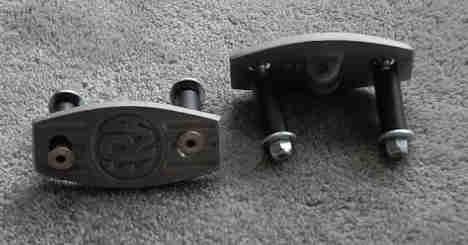While pondering the heater air flap problem I know that on an RHD accessing where the control cable is attached to the flap the pedals are in the way of a clear view even when the Mk2 footwell hood is removed, and wondered if removing the pedals would help. Then looking into the 77 and later pedal box to see what is involved in that - the single-circuit system is easy, I spotted these pedal covers at Moss which attach using three screws to the existing pedal pad. Not interested in 'bling' personally but it struck me they might make a good 'top' with a suitable spacer underneath, to effectively move the pedal pads further back. Geoff was up for that so ordered the two-pedal set, the three are about double the price:

Next thought was the spacer for between the existing pad and the new cover, which tests indicated needed to be about 1" thick - so doable. It needs to be curved, and alloy or plastic so as not add too much weight. I have some alloy strip of about 2mm which can be bent into the curve easy enough but would need about a dozen thicknesses, the layers sliding relative to one another was a concern and putting lateral forces on long screws going through the whole assembly, so the layers would need to be bonded together at least, if not to the new cover. Then Geoff came across some 12mm acrylic sheet, thin enough to bend with some heat, and only two layers needed. They also do 25mm i.e. a single layer but that might be a bit thick to bend all in one go. Sample sheet ordered - at 150 x 150 it's actually big enough to do the job, not free but at a reduced cost.
The screws with the cover are 8/32 UNC and we would probably need 1 1/2" go through cover, spacer, pad and nyloc nut - available from Fusion Fixings and Accu but best to wait until I have the blocks cut and shaped.
When the covers come they are slightly bigger than the pedal pads, probably about the same size as the rubber pads. Clutch pedal on the left with the arm welded at an angle, brake on the right with the arm welded square:
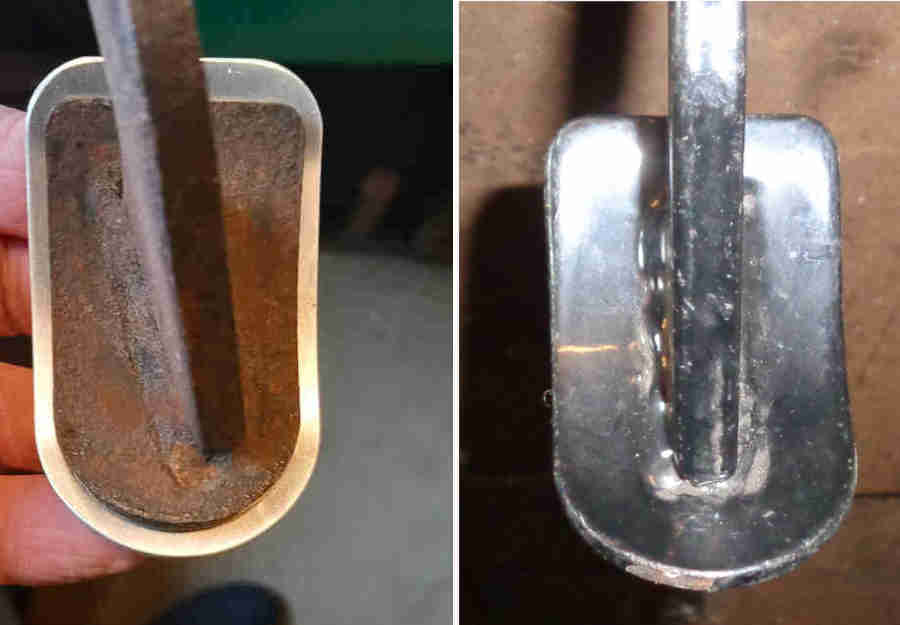
The instructions talk about aligning these carefully so that when drilling the pedal pads there is enough space round where the pad is welded to the arm to get the nuts on, and there is only one hole at the bottom, in the middle, as is the arm. With the cover being bigger than the pad there is scope for moving the cover down a bit (it looks the weld would be in the way on a spare pedal), but you would have to bear in mind the two covers being side by side - if one is higher than the other it might notice:

Also sliding them down then brings one of the top screws close to the weld on the clutch as the arm is welded at an angle to the back of the pad. If you then slide the cover across as well as down that will effectively move the clutch pedal closer to the brake pedal. The brake pedal weld is vertical so only the height needs to be considered. That could be moved across as well in the same direction as on the clutch to keep the separation, which would put it closer to the accelerator, but then that might aid 'heel and toe' down-changes when braking!
The acrylic sheet is pretty chunky at 12mm and initially I opt to cut it with a fine jig-saw blade. Got to the end and the cut piece didn't fall off ... it had welded itself back on again! Used a coarser blade and that the the next cuts worked OK. Clamped the tip of the pedal and plastic piece in the vice and started with the heat gun expecting it to soften and be able to push the plastic against the pedal pad into a curve and hold it there until it hardened again ... but it didn't want to move:

So I had to use a large Mole wrench on the unclamped end which pulled it in a bit:
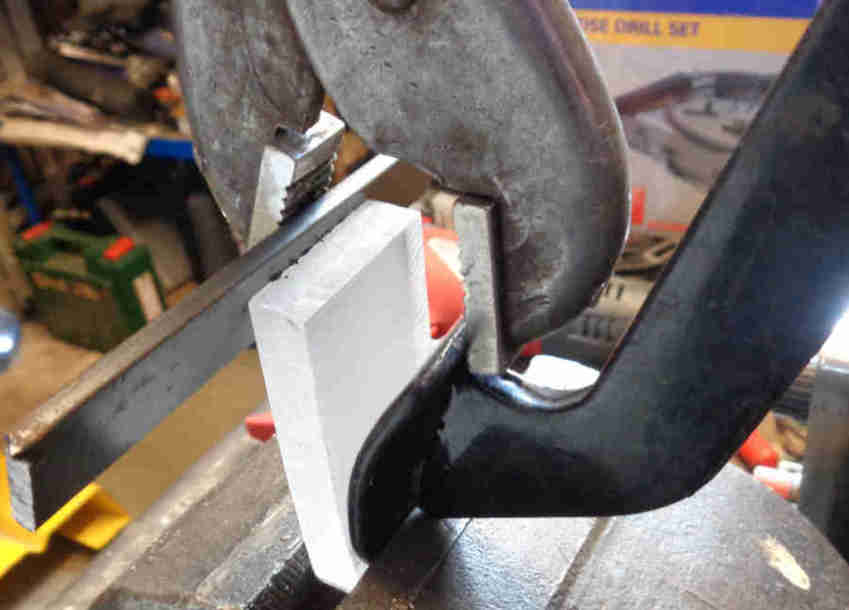
Kept the heat on tightening the wrench bit by bit:
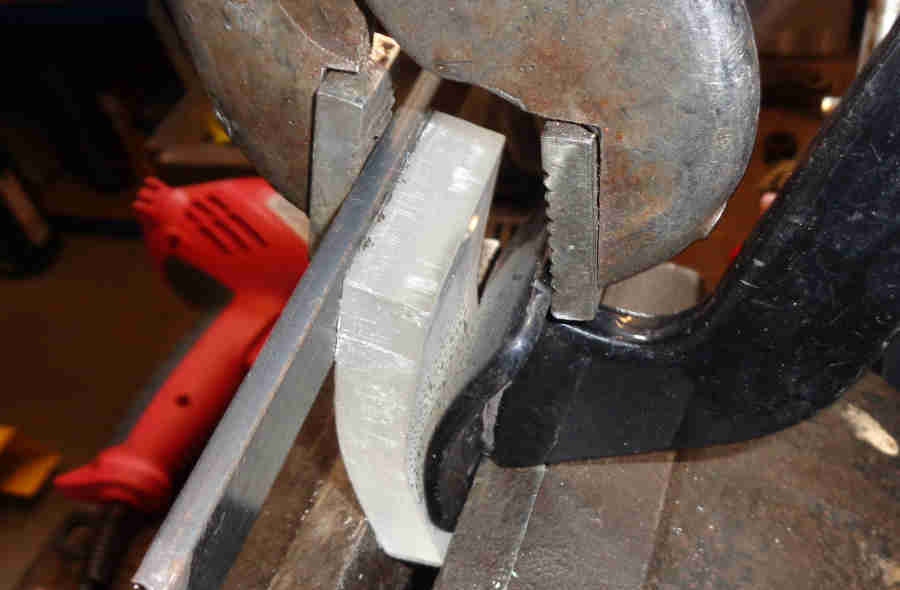
Until it reached the pedal pad:
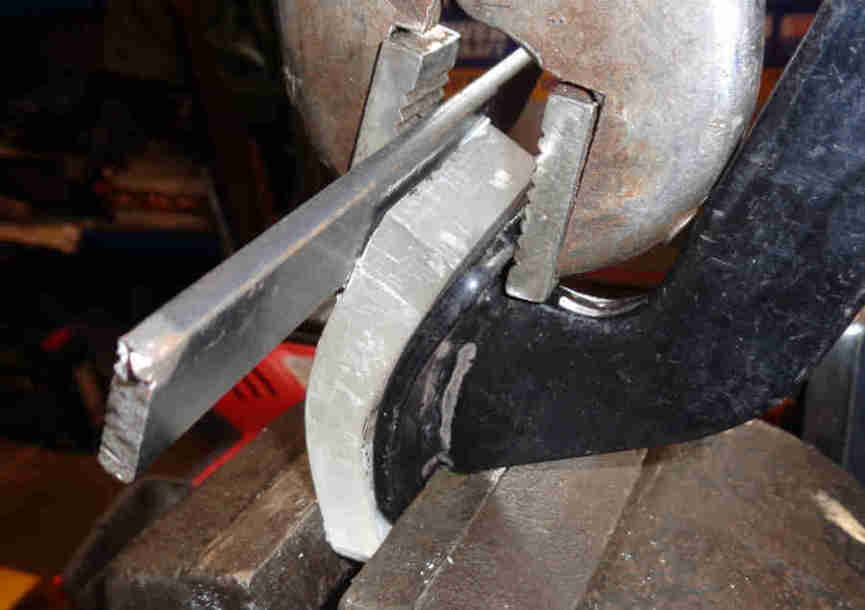
Unclamped it only came back a tiny bit so I left it at that, and did the second piece. Curves are reasonable, we do need 2" screws though and cut them down a bit as 1 1/2" would only just start in the nuts, but it does mean the spacing back to Geoff is that bit more:

I then realised that the positioning of the holes in the pedal pad are not critical. Where the cover is directly on the pad then of course they have to line up, but with the 1" spacer the holes in the pads can be drilled so the nuts clear the weld, the countersunk screws being at a slight angle though the spacer won't matter.
Next step was to shape them to the pedal pad:
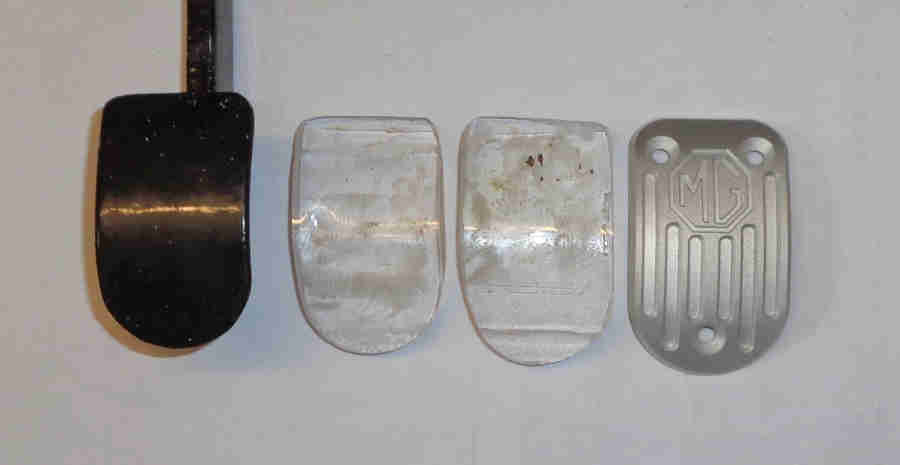
Spacers and covers fitted. Geoff well pleased as with the seat right back he can now get the clutch pedal to the floor 'naturally' i.e. without having to twist in the seat. We did ponder padding the accelerator pedal as well as the surface of that is now a good inch below that of the brake instead of the two being level, but if he finds his foot catching as it moves from accelerator to brake we can do that one as well. Bending the pedal arm is not an option as this type of pedal includes the stop to the floor, without that the accelerator cable risks being broken. An alternative to spacers on the pedal could be a block on the floor as w as used with the earlier pedals:
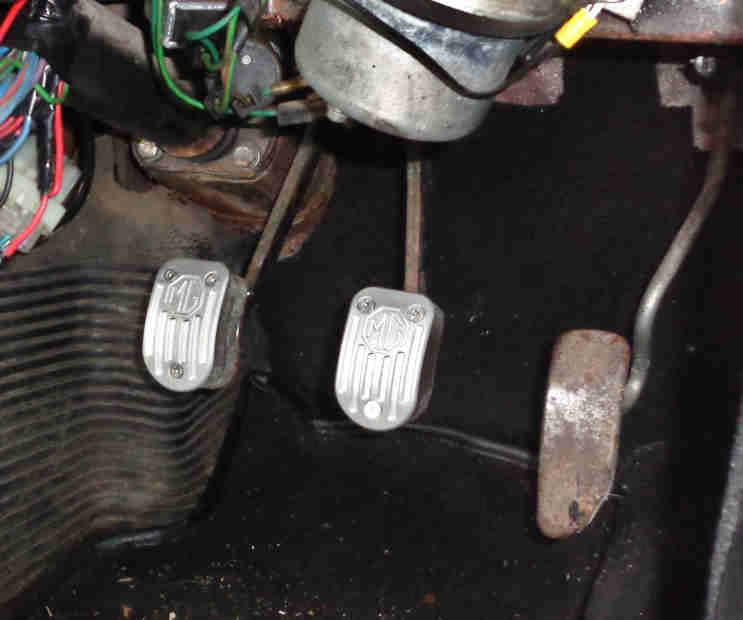
Some alternatives from around the web:

More substantial clamp-on, a bit clunky, and they seem to wider than the original pad so with both feet on the clutch and brake they may catch:
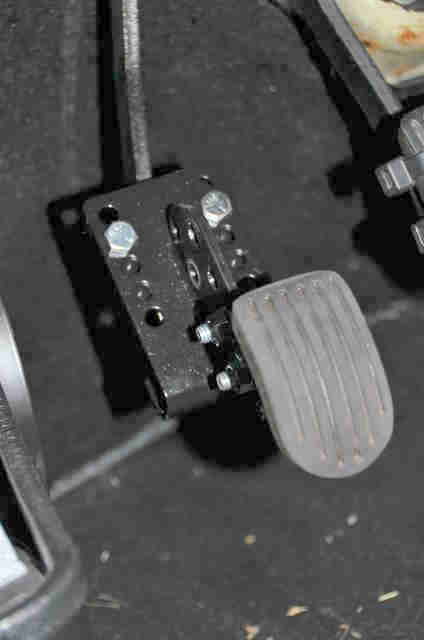
'Cut and shut' so not immediately reversible, no risk of catching, but solid welding needed:
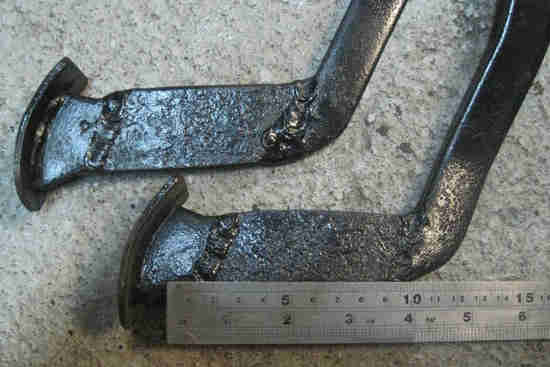
I wouldn't trust these at all in emergency braking:
